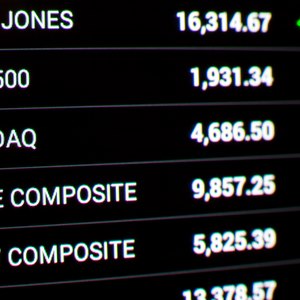
A company’s stock price is a clear measure of market expectations about its future performance. In contrast, a market index, such as the Dow Jones Industrial Average, is a statistical measure of the level and direction of movement in the prices of a set of securities, such as stocks. Each index is constructed in a unique way in terms of the number of securities included in the index, the manner in which each security is selected for or eliminated from inclusion in the index and the way the index representative value is calculated.
Calculation of Stock Market Indices
Stock market indices are typically calculated by applying formulas to base values of the securities included in the indices at the inception of each index. Thereafter, the index calculation is based on an observation of the movement of each of the included securities in one of two directions, namely an increase or decrease in value. An index may be calculated repeatedly throughout the trading day, once a day or on a monthly or quarterly basis.
Read More: What Does It Mean When the Dow Falls?
Dow Jones Industrial Average
"The Dow," or the Dow Jones Industrial Average, is a stock market index that tracks the market performance of 30 blue-chip public companies that trade on the New York Stock Exchange and the NASDAQ. As an index, the Dow plots the representative rise and fall in value of the 30 Dow Jones Industrial Average companies over time. As a reflection of the health of one part of the stock market, it serves as an indicator of the health of the U.S. economy.
The Dow, which is based on the prices of the individual stocks it includes, provides a hypothetical view of the collective change in the stocks of the index over time relative to change in industry stocks at large. The Dow provides a means of comparison of the current representative value of the index versus that value at another time.
The Value of 'the Dow'
The Dow Jones Industrial Average is a benchmark with which an investor evaluates the performance of his stock portfolio or industrial stocks at large. The investor considers the relative change of an index as well as the most current metric relative to individual industry stocks.
The change in an index from a prior day, the rise or fall in the index, is represented as a percent. Alternatively, the most current metric informs the investor of the stock's rise or fall in value relative to its baseline value.
An investor can compare the prices of the industrial stocks in their personal portfolios to that of the Dow to determine if the amount of cash they are earning on their portfolio is more or less than that which would be earned by the index. Then, they use this information in a decision-making process as to whether buy, sell or hold stock.
The Dow and Indexed Investing
An investor intent on "indexed investing" commits to an investment portfolio that replicates the Dow. With this approach, the investor makes no active attempt to beat the market, but rather to beat the returns of the average investor.
Both mutual funds and exchange-traded funds offer the means to pursue indexed investing. For instance, you could create your own New York Stock Exchange index fund by buying 1 percent of the outstanding shares of every company that trades on that exchange.
Read More: Sectors of the Dow Stocks
S&P 500 Index
Many market indexes exist to measure the performance of a group of securities, such as stocks. For instance, the Standard and Poor Index (S&P 500) is a stock market index that tracks the stock prices of 500 of the largest public companies in the United States. To be included in the S&P 500, a company's valuation must be more than $10 billion.
Investors who follow the S&P 500 can easily see whether the largest U.S. stocks are gaining or losing value and use that information to make buy, sell and hold decisions about the securities in their own portfolios.
An index is not an investment vehicle or security, rather, it's a means to track the performance of a set of securities relative to that of a certain market or exchange, or those companies that operate in a certain industry and so on. As such, an index is a proxy that infers the overall health of the stock market or even the U.S. economy. Consequently, the index provides investors an idea of what to expect in terms of the performance, or an increase or decrease in value, of stocks that share characteristics with others in an index.
References
Writer Bio
Billie Nordmeyer is an IT consultant of 25 years standing. As a senior technical consultant for SAP America and Deloitte Touche DRT Systems, a business analyst, senior staff, and independent consultant, Billie has worked across the retail, oil and gas, pharmaceutical, aeronautics and banking industries. Billie holds a BSBA accounting, MBA finance, MA international management as well as the Business Analyst and Software Project Management certificates from the Cockrell School of Engineering at the University of Texas at Austin.

